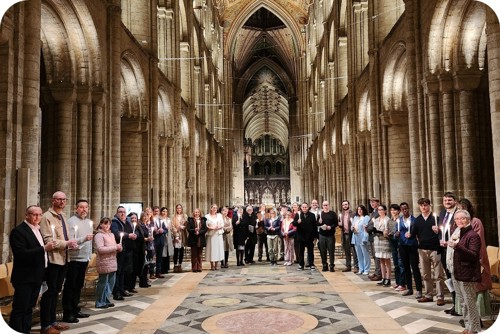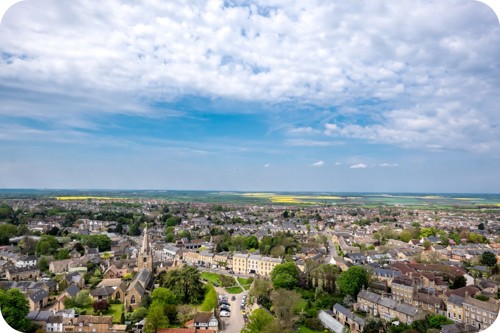A Portrait of the Diocese
Ely Diocese exists to share the Christian gospel with all people in Cambridgeshire and west Norfolk, and to equip Christians to serve the needs of their local communities and the wider world.
The Diocese has a rich history dating back to 673, when Etheldreda founded a religious house. Later, King Edgar and others provided endowments, and in 1109, Henry I officially established the Diocese. The boundaries remained mostly unchanged until 1914, when the Diocese of St Edmundsbury and Ipswich was formed, and some areas from Norwich Diocese were added to Ely, giving it its present structure. Click the map to view it enlarged.
The Diocese today consists of 15 deaneries: 7 in the Cambridge Archdeaconry (south) and 8 in the Huntingdon & Wisbech Archdeaconry (north). Around 430 clergy hold the Bishop's licence or permission to officiate. Our budget allows for around 98 stipendiary roles (FTE), who generally work in close collaboration with non-stipendiary clergy and the many lay ministers and lay volunteers who bless our church life. We have invested in training for Licensed Lay Ministers (LLMs) and Authorised Lay Ministers (ALMs) and are seeing numbers offering for training slowly increasing over time. Local churches are sustained by the work of churchwardens, parish safeguarding officers, PCC treasurers and secretaries, and many others.

The Diocese has 344 churches in 303 parishes and four mission initiatives operating under Bishops' Mission Orders (BMOs). The Diocese is diverse. Most benefices in the City of Cambridge are single-parish, whereas elsewhere most churches are part of multi-parish groupings, and more generally, the northern deaneries have larger benefices. Our churches embrace a wide variety of theological perspectives and liturgical styles.
 Patterns of wealth and poverty vary across the Diocese. A 2021 report on Cambridgeshire highlighted the region's economic disparities, with Cambridge identified as the most unequal city in England and Wales regarding wealth distribution. This inequality is also reflected in the Diocese, where some areas thrive while others struggle with financial sustainability. Generally speaking, the Huntingdon & Wisbech (northern) archdeaconry faces greater deprivation than the southern one.
Patterns of wealth and poverty vary across the Diocese. A 2021 report on Cambridgeshire highlighted the region's economic disparities, with Cambridge identified as the most unequal city in England and Wales regarding wealth distribution. This inequality is also reflected in the Diocese, where some areas thrive while others struggle with financial sustainability. Generally speaking, the Huntingdon & Wisbech (northern) archdeaconry faces greater deprivation than the southern one.
Between the 2011 and 2021 censuses, the Diocese’s population increased by 10.7% (compared to 6.6% for England overall), while some deaneries increased even faster (25.6% in Cambridge South, 21% in Yaxley (i.e., south Peterborough), 18.7% in Bourn (near Cambridge).
New-build housing is creating brand-new communities, and people (who tend to be younger than average) are moving into the Diocese at a rapid rate.
The Diocese cares for 82 church schools and academies (mostly primary-stage) which support over 15,700 learners. Higher education is a significant sector within the Diocese, and Cambridge is a growing centre for research-based industry. Chaplaincy is an important ministry within the Diocese, in education and also in healthcare, prisons, industry, towncentres and other sectors.
Ely Cathedral is the seat of the Bishop of Ely and the mother church of the Diocese. Founded in the 11th century, the beautiful building is a most famous landmark of considerable historical significance. Built to the glory of God, it welcomes thousands of pilgrims and visitors every year.

